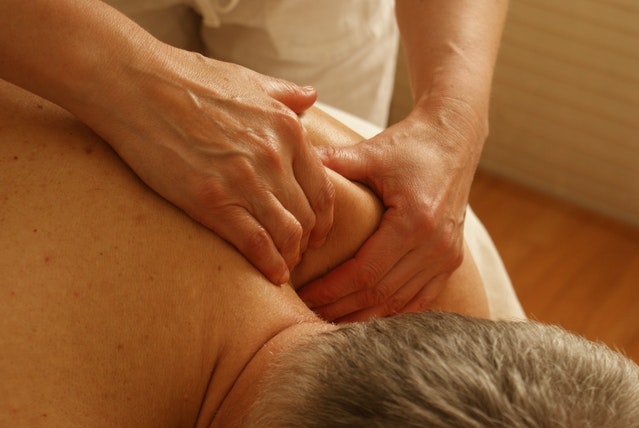Why Do I Have Shoulder Pain? What Treatments Are There?
The shoulder consists of several joints, muscles, and tendons that allow us to have a wide range of motion. If you experience pain in your shoulder, it can be frightening and frustrating. No one wants to lose their mobility.
There are many things that can contribute to shoulder pain. The pain could be temporary, or it might be there to stay. It’s important to know when you should seek help, and what treatments are available to you.
What Causes Shoulder Pain?
There are many reasons why you may develop shoulder pain. Still, some conditions are more common than others.
Here are the four most common causes of shoulder pain:
- Arthritis
- Fracture
- Instability
- Tendon Inflammation or tear

Arthritis is inflammation of the joints which may cause swelling, stiffness, and pain. Osteoarthritis is most common in the shoulders and occurs because of overuse. It usually appears during middle age, and it is slow to develop, gradually worsening over time.
A fracture is a broken bone. A broken shoulder is usually the result of a high-energy injury such as a vehicular accident or a sports injury. Shoulder fractures are also very common in the older population who is prone to falling.
Instability is another name for a dislocated shoulder. A dislocation occurs when the bone of the upper arm is forced out of the socket of the shoulder. Usually, this occurs because of an injury, but it may occur from overuse as well.
Tendon inflammation usually occurs because of repeated activity. It may also be the result of a degenerative condition like arthritis. Bursitis is inflammation of the bursa sacs. These are fluid-filled sacs that surround the joint. Tendinitis is usually a result of inflammation in the tendon.
Here are some other things that may be causing you shoulder pain:
- Bone Spurs: calcium deposits located around joints that can cause pain and mobility issues
- Impingement Syndrome: the rotator cuff becomes caught between the acromium and the humeral head
- Acromium: the part of the scapula that covers the ball
- Humeral Head: the ball-shaped area of the humerus
- Injury: this may be the result of anything from a sports injury to a car accident
- Frozen Shoulder (Adhesive Capsulitis): shoulder joint tissues become thicker, limiting your range of motion
- Heart Attack: blood flow to the heart becomes blocked or cut off
- Pinched Nerve: a compressed nerve caused when the bones, muscles, cartilage, or tendons apply too much pressure to the nerve
- Rotator Cuff Tendinitis: swollen tendons
- Spinal Cord Injury
- Torn Cartilage
- Torn Rotator Cuff: the rotator cuff consists of four tendons and muscles that stabilize the upper arm
How Do Doctors Diagnose Shoulder Pain?
There are so many different reasons why your shoulder may be causing you pain. So, it can make your doctor’s job a bit difficult.
First, they’ll start by examining your medical history. Then, they will complete a physical examination. They will test your shoulder and the surrounding areas to see if there is any swelling, or if you’re in any pain. They will also look to see if the pain has limited your range of motion.
Your doctor may also run some tests. The most common tests they will perform include X-rays or MRIs.
Treatments For Shoulder Pain
There are several treatments for shoulder pain. Treatment depends on what is causing your discomfort.
Changes In Activity
If your shoulder pain is a result of injury or overuse, your doctor may recommend altering your activities. You’ll want to prevent overexertion and not force your body to do the things it normally does to cause pain.
Massage Therapy
Researchers have found that utilizing massage therapy is effective for reducing pain short term. If you take advantage of massage therapy over a longer period of time, it may reduce your shoulder pain in the long term.

Medications
Medications are a common treatment for pain and inflammation. In more extreme cases, your doctor may provide numbing injections to relieve pain. They may also prescribe more powerful steroid medications.
Physical Therapy
The goal of physical therapy is to reduce your pain, increase your strength and mobility, and improve your quality of life. Your doctor should assess your shoulder injury to determine if physical therapy will be suitable for you.
Physical therapy exercises may include stretching, joint stabilization and mobilization, and muscle strengthening. They may also apply ice, heat, or electrical stimulation devices to relieve pain as well.
A study evaluated 66 individuals suffering from shoulder pain. Half of these individuals received physical therapy for a month, while the other half did not. The individuals who received therapy had noticeable improvements in their pain levels and mobility. Those who did not receive therapy continued to decline.
Surgery
Surgery is usually the last resort after all other treatments have failed. Yet, some conditions cannot be treated with physical therapy, rest, or medication.
Recurring dislocations and some rotator cuff tears may only be fixed with surgery. Shoulder surgeries may include reconstruction, removal of scar tissue, repair of torn tissues, or even full shoulder replacement.
Everett Physical Therapy, Massage Therapy for Shoulder Pain
Shoulder pain is common, especially in older populations. The most common causes of shoulder pain include arthritis, fractures, instability, and tendon inflammation.
Whatever is causing your shoulder pain, know that you don’t have to live with the pain forever. Speak with your doctor to talk about your treatment options. For those who are in Snohomish county or Everett, Washington, we are here for you! Reach out to us to schedule a physical therapy or massage therapy appointment.







